Monuments, it won’t surprise you to hear, hold immense power.
The very first monument made in the United States was Montgomery Monument —a memorial dedicated to General Richard Montgomery, who died in the Revolutionary War. Since the nation’s first memorial, built in 1776, there have been 132 national monuments and countless more memorials and tributes made to honor lost soldiers, historic battles and good samaritans alike. There have also been countless debates over what monuments are appropriate and what the purpose of these monuments are — especially in the context of installations commemorating slaveholders, confederate generals, colonizers and perpetrators of genocide.
As protests against the presence of confederate statues have grown louder over the years, they have also increased the volume of the discussion on what constitutes a restorative and meaningful monument.
To highlight some monuments that honor resilience and promote healing, here are five monuments across the U.S. that promote healing instead of harm. These works artfully demonstrate how monuments have the potential to remember the horrors of past history, reflect on the strength of their communities and dare spectators to dream of better futures.
Detroit Riverfront Conservancy, Healing Memorial
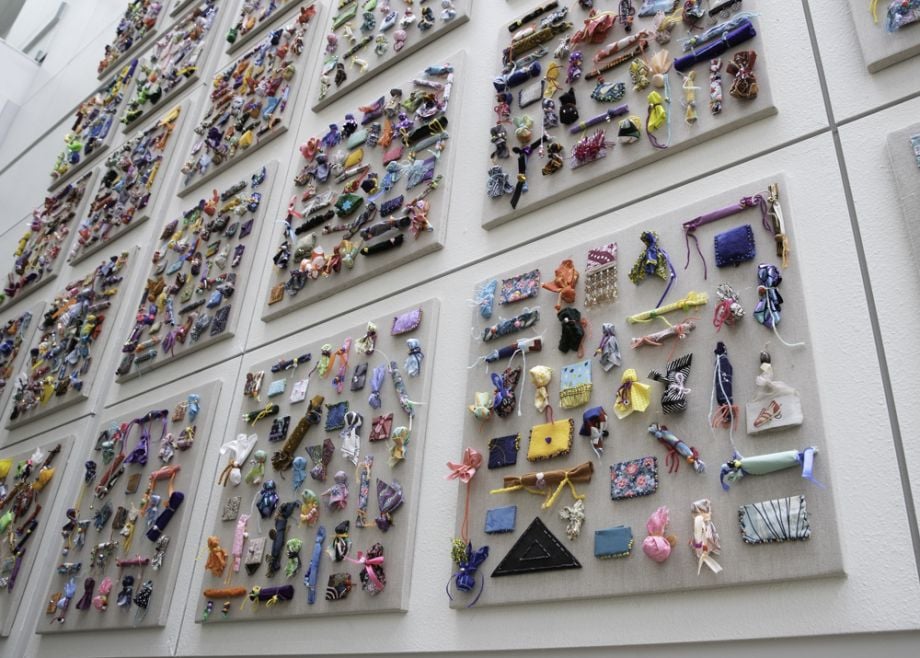
(Photo courtesy City of Detroit)
The Healing Memorial, located in Detroit, Michigan, was created by the Cranbrook Art Museum in collaboration with the Detroit Riverfront Conservancy and the City of Detroit Office of Arts, Culture and Entrepreneurship. The memorial serves as a tribute to the lives lost during the COVID-19 pandemic, as well as a recognition of the collective grief that the community was experiencing amid the many trials of 2020.
The memorial, designed by Afro-Caribbean artist Sonya Clark, features a tapestry made up of small patches of fabric, collected from the residents of Detroit. Collected in shops, churches, day camps and community events, the cloth pieces were placed on square tiles, arranged in a grid formation.
As its name suggests, the monument continues to serve as a place of healing for the residents of Detroit. Despite the painful events that inspired its creation, the art piece serves to uplift onlookers as they take in the beauty of their own community, and the resilience that is preserved in the colorful blots of fabric.
The installation is currently housed at the Cranbrook Museum, in an exhibit featuring Clarke’s work. It will remain there until the exhibit closes in September.
Legacy Walk, Chicago, IL
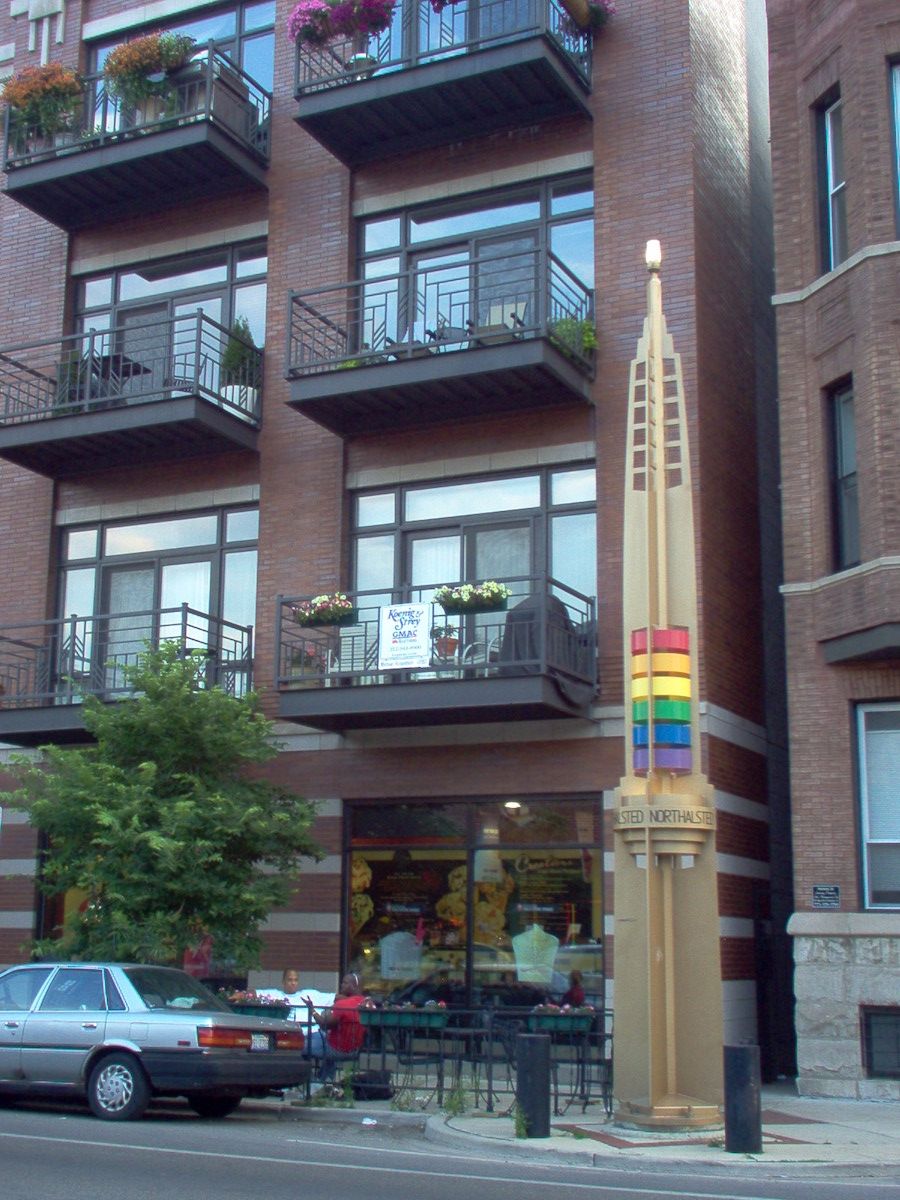
(Photo by Gerald Farinas / Wikimedia Commons)
The Legacy Walk in Chicago, IL, is an outdoor LGBTQ+ history exhibit in the town of Lakeview, otherwise known as “Boystown.” The installation consists of ten pairs of steel “Rainbow Pylons” that line the street. Each pylon contains a series of bronze memorial plaques, each dedicated to an important figure in LGBTQ+ history.
Declared a historical landmark in 2019, Legacy Walk opened on October 11, 2012, also known as National Coming Out Day. The creators of the outdoor museum wanted a space dedicated to celebrating the milestones achieved by the LGBTQ+ community all over the world. Chicago was chosen to house the monument due to the city’s history of being a center for LGBTQ culture (seen in its establishment of the first ever Gay and Lesbian Hall of Fame, and the city’s designation of North Halstead St. as the center of the city’s queer community).
Every year on the anniversary of its creation, the city adds additional plaques to the exhibit to continue its mission to honor and recognize more trailblazers in LGBTQ+ history. As was the mission of the museum upon its inception, the installations strive to overcome the lack of education on LGBTQ+ history in schools by bringing the knowledge to the streets.
Chicano Park, San Diego, CA
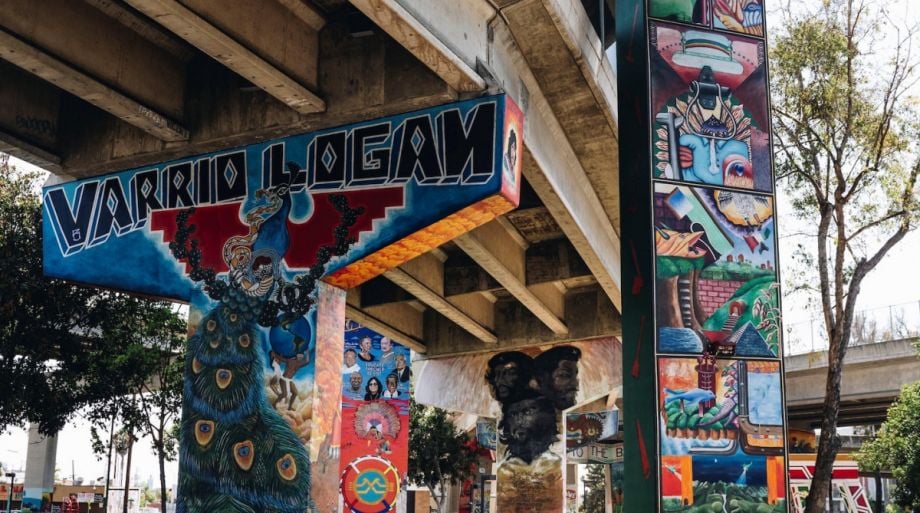
(Photo by Diego Lozano / Unsplash)
Chicano Park, located in Logan Heights, San Diego, is also known as the spot with the highest concentration of Chicano murals in the world. Situated in San Diego’s oldest Mexican-American neighborhood, Chicano Hub pays homage to a long legacy of Mexican culture.
The location of the park has an important history. What started off as a residential area in the early 20th century quickly became overtaken by the Navy and other military operations amidst the second World War. When the state decided to split up the neighborhood by constructing a freeway through the area, the residents were promised that they would be given a much desired community park in compensation. After a decade passed and no progress was made on the park, community leaders learned that the offer had been rescinded in place of a Patrol station. After a twelve-day stand out and many subsequent months of negotiating, the community managed to cease construction of the station and have the park instated in 1971.
Many artists contributed to the park’s artwork, coming together to create works that were a combination of Pre-Columbian, colonial, modern and contemporary styles. The murals were retouched from 2011 to 2012, and since then, the park continues to be a sight of culture and entertainment. Every year, the community celebrates “Chicano Park Day,” where residents can enjoy a number of performances and food venues to commemorate the park’s incredible history. Above all, the landmark not only serves as a tribute to a rich cultural heritage, but also as a reminder of the power of community organizing in creating spaces of joy and life.
Read more about the fight to create San Diego’s Chicano Park Museum and Cultural Center, as well as the legacy of a similar park mired in Chicano history in El Paso.
National Native American Veterans Memorial, Washington, D.C
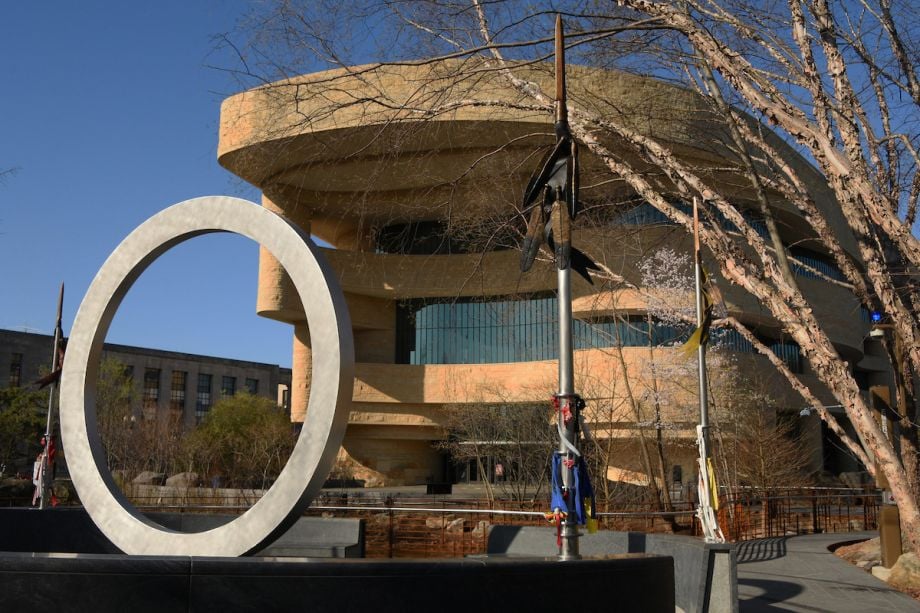
(Photo by Amaury Laporte / CC BY 2.0)
The National Native American Veterans Memorial is situated in the Smithsonian National Museum of the American Indian in Washington D.C. Designed by Cheyenne and Arapaho artist and veteran Harvey Pratt, the memorial is meant to honor Native Americans who served in the military.
The monument is entirely made out of stone, existing in a circular space outlined by a ring of stone benches facing a sculpture in the shape of a giant ring. Water lines the basin at the foot of the sculpture and the entire space is ensconced by a ring of trees. Pratt put much thought into creating a design that could resonate with the 574 federally recognized tribes and countless other state tribes. He made sure to incorporate universally significant elements such earth, air, water, and fire into the design, along with eagle feathers, and sacred colors, and other significant symbols. He also included all the seals of the military in the monument’s design, to demonstrate the contributions that Native Americans have made to every single branch of the army.
According to Pratt, healing ceremonies for veterans have been a long-standing tradition in Indigenous cultures. “They recognized that people came in from battle, and they were still carrying [PTSD] around in their hearts,” Pratt said, “So they had these ceremonies that they used to take care of their veterans.”
The memorial has been intentionally left dateless, and is intended to remain a timeless place for veterans of the past and future to come and experience healing. It also serves to educate Americans on the sacrifices made by Native Americans to the U.S army and the importance of those contributions to Indigenous communities.
Freedman’s Cemetery Memorial, Texas
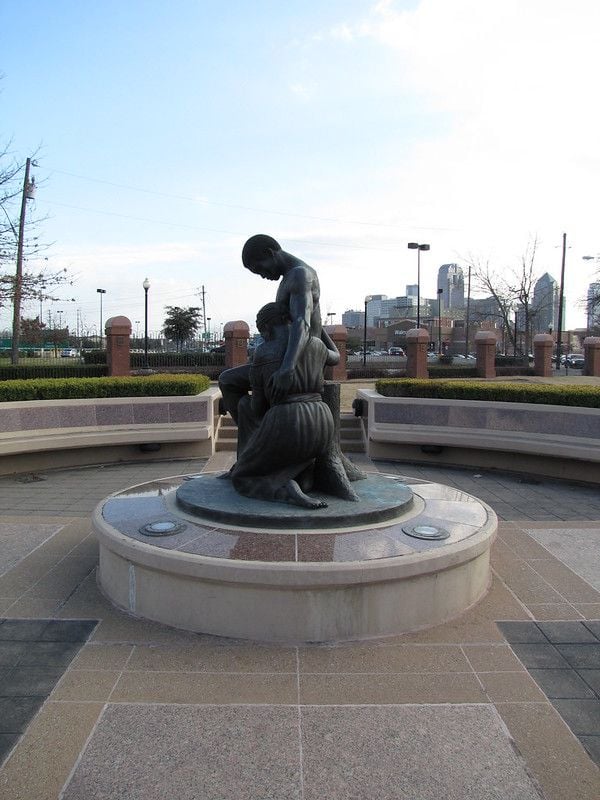
(Photo by QuesterMark / CC BY-SA 2.0)
Freedman’s Memorial is home to Dallas, TX, and was made to commemorate Freedman Cemetery: a once forgotten graveyard where more than 5,000 freed slaves were buried. The location itself is symbolic, as North Dallas was a thriving community center for Black people and was one of the largest Black neighborhoods in the country amidst segregation laws.
The memorial starts at an archway that features two bronze statues of a man (“the Sentinel”) and woman (“the Priestess”) dressed in clothes inspired by the Benin culture of West Africa. On the other side of the arch are two counterpart figures, this time carved from bronze bas-reliefs. They depict a man (“the Struggling Soul”), and woman (“the Violated Soul”), respectively, both enchained and submerged in water. The interior of the memorial is centered around two life-sized bronze figures, representing a newly-emancipated couple (“Dream of Freedom”). At the back of this sculpture lies a granite slab with a poem titled, “Here,” by Nia Akimbo.
David Newton, designer of the memorial, strived to create a piece that could hold both the gravity of enslavement while also bringing healing to visitors. The dichotomy of twin sculptures at the entrance is meant to pay homage to those who experienced the brutality of slavery, while also celebrating their survival and ancestral power. The monument continues to demonstrate how future monuments can grapple with both the horrors of history and the legacy of resilience and recovery left behind in its wake.
If there is one thing that these monuments make clear, it is that there is no ceiling for innovation and nuance when it comes to commemorating history and culture. These examples serve as proof that monuments do not exist merely to beautify a space or grow rusted with age and negligence. They can tell a more empowering narrative and imbue community spaces with a sense of vitality and togetherness that would otherwise be left cold and bare — a service that is truly monumental.

Punnya Kalapurakkel is Next City's Summer 2023 Emma Bowen. She is a rising junior at Boston College, where she is pursuing a double major in communications and psychology.

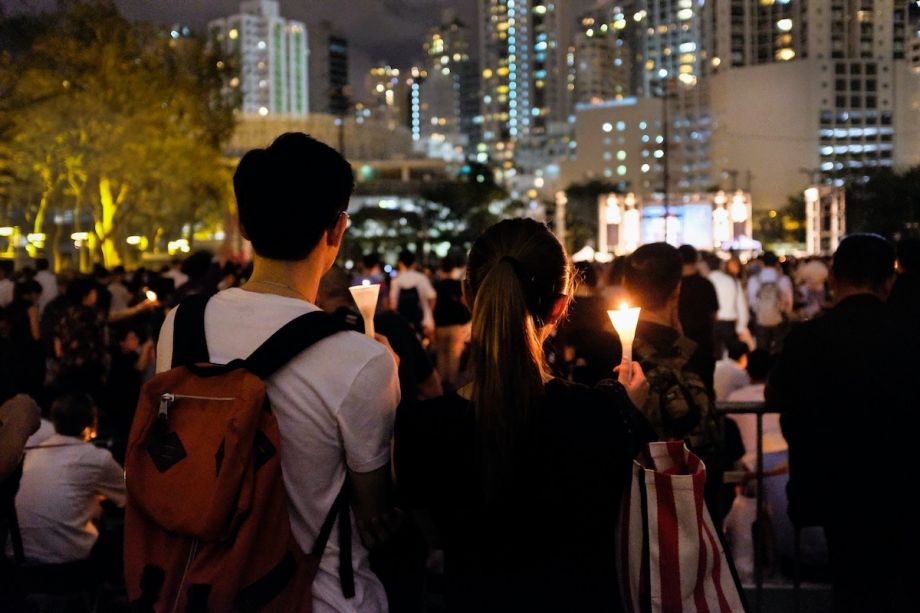
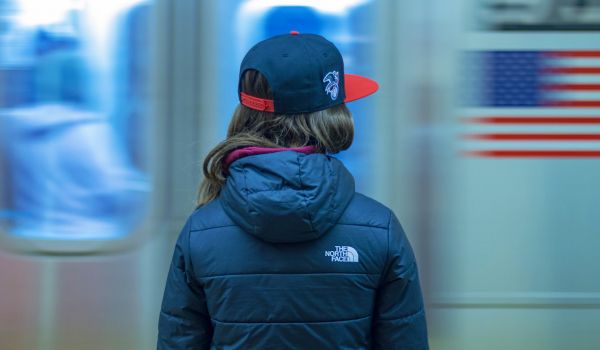
_600_350_80_s_c1.jpg)








Comment posted on August 14, 2023 at 1:37 p.m.
Thank you for including “The Legacy Walk” in this thoughtful feature. Though it is great to be acknowledged, I’m afraid there is an unintentional misrepresentation. The article suggests that the Legacy Walk is managed by the City of Chicago. It is not. The Legacy Walk Outdoor LGBTQ History Museum is managed by the Legacy Project, which is a private 501(c)3 charity. We do have a binding legal agreement with the City, but we receive no funding nor does the City control the content. Every aspect of the Legacy Walk (and its traveling cousin “The Legacy Wall”) is privately managed and funded… and that means volunteers, donors, scholars, authors, archivists, librarians, researchers, academics… thousands of people (literally). It is truly the work of a “community.” We welcome visitors to come for a private guided tour of the largest LGBTQ space on earth ever to be declared an Historic Landmark. If your readers would like to learn more, please check-out https://legacyprojectchicago.org/